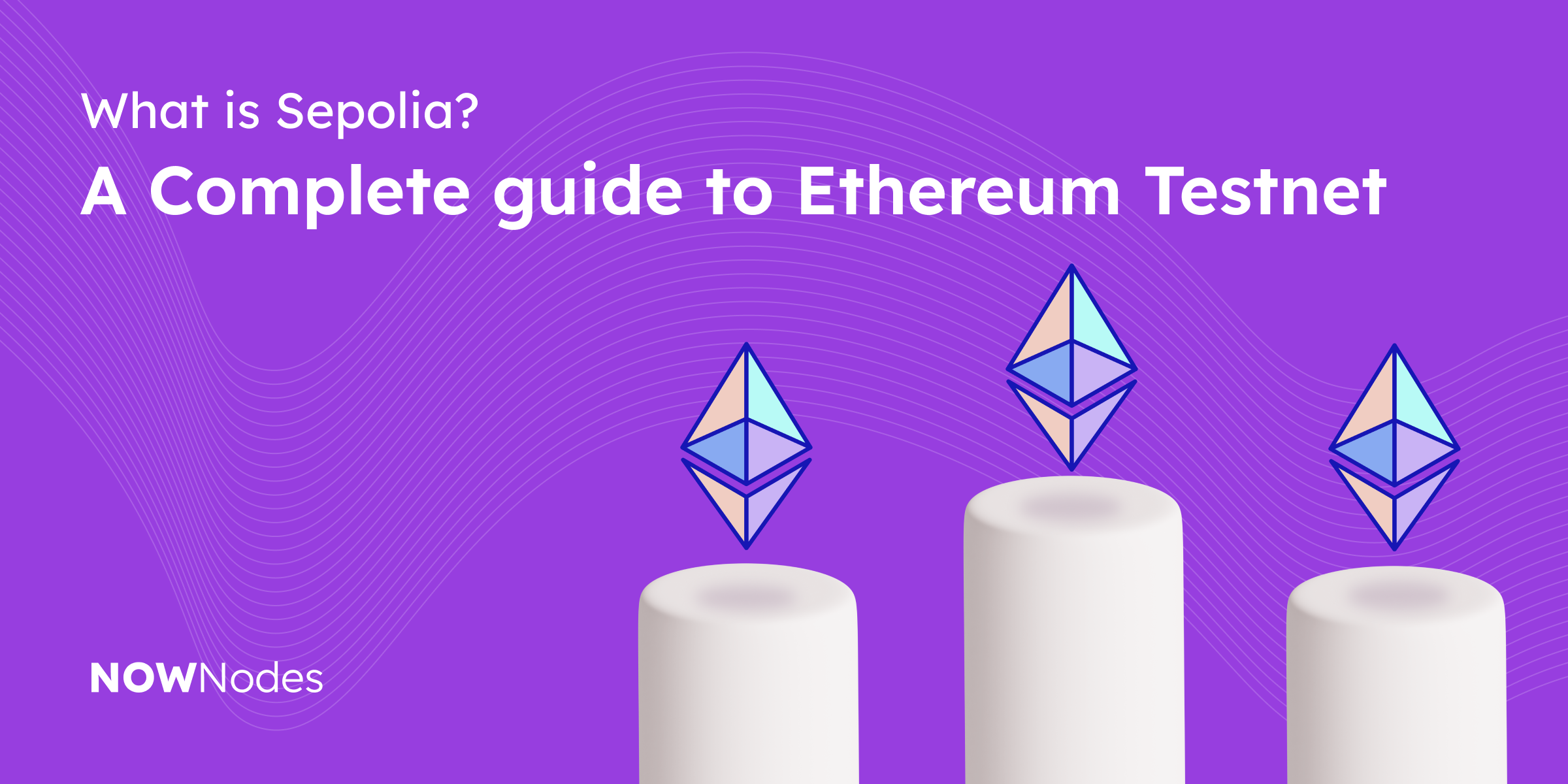The Ethereum ecosystem depends on reliable and consistent testnets to ensure the safe development, deployment, and testing of smart contracts and decentralized applications. As legacy networks like Ropsten and Goerli are deprecated, Sepolia has emerged as one of the two canonical Ethereum testnets. This article provides info about what is Sepolia, its architecture, and how developers can integrate with it using infrastructure like NOWNodes.
What is Sepolia?
Sepolia or Ethereum testnet is a Proof-of-Stake (PoS) Ethereum testnet that closely mirrors the structure and behavior of Ethereum mainnet. Originally launched in 2021 as a Proof-of-Authority (PoA) network, Sepolia transitioned to PoS in 2022 in alignment with Ethereum’s mainnet shift during The Merge.
Moreover, Ethereum testnet is now maintained by the Ethereum core development community and is used to stage mainnet upgrades before they are deployed to production. Its primary advantages are its lightweight chain size, quick finality, and compatibility with modern Ethereum tooling.
Network specifications:
- Network name: Sepolia
- Consensus: Proof-of-Stake
- Block time: ~12 seconds
Why Sepolia?
Sepolia is designed for developers who need a lightweight, mainnet-like test environment with full support from Ethereum clients and infrastructure providers. It has become the default choice for Ethereum application testing due to the following characteristics:
1. Mainnet Parity
Sepolia runs the same PoS consensus and execution layers as Ethereum mainnet, making it ideal for pre-deployment testing of protocol upgrades, contract behavior, or gas usage.
2. Long-Term Stability
Unlike ephemeral or deprecated testnets, Sepolia is one of the two officially supported long-lived testnets (the other being Holesky). This guarantees continuity and future upgrade support, including upcoming hard forks.
3. Efficient State Size
Sepolia’s state is relatively small, which reduces synchronization times and resource consumption for node operators. This is especially important for infrastructure providers and automated testing environments.
4. Full Tooling Compatibility
Sepolia is compatible with major Ethereum development frameworks such as Hardhat, Foundry, Truffle, and Remix. It also integrates seamlessly with RPC services like NOWNodes, which provide immediate access to the network without running a local node.
Accessing Sepolia via NOWNodes
To streamline development, developers can use NOWNodes to connect to Ethereum testnet via a managed RPC endpoint. This eliminates the need to run and maintain a full archive or validator node.
Step 1: Obtain your API key
Register at NOWNodes and retrieve your personal API key from the dashboard.
Step 2: Use the Sepolia RPC URL
https://eth-sepolia.nownodes.io/{API_KEY}
To sum up, This endpoint provides stable, high-availability access to the Sepolia network and supports archive queries.
Sepolia Use Cases
Sepolia is ideal for:
- Testing smart contracts (ERC-20, ERC-721, DeFi protocols)
- Simulating L1 interactions in production-like conditions
- Staging infrastructure integrations (wallets, oracles, indexers)
- Benchmarking gas efficiency and block inclusion behavior
Therefore, because it operates under PoS and mirrors Ethereum’s upcoming hard fork timelines, Ethereum testnet can also be used to validate support for upcoming features like account abstraction (EIP-4337), EOF (EVM Object Format), and EIP-7702.
Conclusion
In conclusion, Sepolia has become the standard testnet for Ethereum development, offering a lightweight, reliable, and production-similar environment for smart contract deployment and infrastructure testing. With consistent upgrade paths and full ecosystem support, Ethereum testnet is now foundational for any serious Ethereum-based project.
NOWNodes provides fast, scalable RPC access to Sepolia, allowing teams to develop, test, and iterate without managing their own node infrastructure. NOWNodes has Sepolia Full Node, Websocket and Explorer connections!



